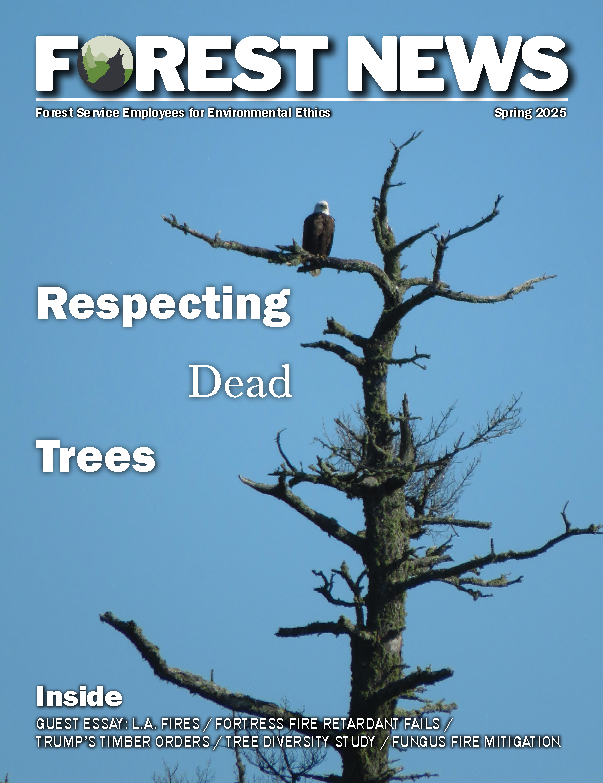Transferring the U.S. Forest Service to the Department of the Interior
When the Titanic was taking on water, the survivors didn’t hesitate to abandon ship. Staying aboard a sinking vessel wasn’t an act of loyalty; it was a death sentence. The Forest Service, steaming along under the USDA’s flag, has been taking on water for years. It’s time for Congress to abandon this foundering bureaucracy and transfer the agency to the Department of the Interior.
The Forest Service’s problems are no secret. The agency is chronically underfunded, overburdened, and bogged down by outdated administrative structures. Forests burn, watersheds erode, and infrastructure crumbles while the agency dithers with paperwork and bureaucratic inertia. The Albuquerque Service Center, the Titanic’s engine room, has become a punchline among Forest Service employees who joke that it can’t even process basic hiring paperwork, let alone propel the agency toward modernization.
Meanwhile, the Interior Department fleet sails by — National Park Service, Bureau of Land Management, Fish and Wildlife Service — agencies that manage public lands with missions more consistent with the Forest Service’s core responsibilities. Unlike the USDA, whose primary focus is agriculture, the Department of the Interior has expertise in conservation, recreation, and natural resource management. This is the lifeboat the Forest Service needs.
The Forest Service’s placement within USDA was a historical accident rather than a logical choice. Created in 1905 during Theodore Roosevelt’s administration, the Forest Service was housed in the USDA because of its original focus on timber production. At the time, forests were seen primarily as crops to be harvested, but the agency’s responsibilities have shifted dramatically. Today, the Forest Service’s mandate revolves around ecosystem health, wildfire management, watershed protection, and recreation — missions that align far more closely with Interior.
Take wildfire management, for example. The Forest Service spends over half its budget fighting fires, yet it struggles to coordinate effectively with Interior agencies that oversee neighboring lands. Wildfires don’t respect administrative boundaries, and neither should our federal response. A unified approach under the Department of the Interior would streamline decision-making, improve resource allocation, and eliminate duplication of effort.
Similarly, recreation and tourism — key drivers of rural economies — suffer under the current system. Hikers, campers, and hunters don’t care whether they’re visiting a national forest or a national park; they just want well-maintained trails, accessible facilities, and clear information. Yet the bureaucratic silos between the USDA and Interior create confusion, inefficiency, and missed opportunities to better serve the public. Consolidating the Forest Service with Interior’s recreation-oriented agencies would create a seamless experience for visitors while allowing the federal government to manage public lands more holistically.
Opponents of this idea may argue that such a transfer would disrupt the Forest Service’s culture and traditions. But let’s be honest: the agency’s current culture — defined by rigid hierarchies, chronic understaffing, and a growing reliance on outsourcing — isn’t worth preserving.
Agriculture Secretary Tom Vilsack has acknowledged the limitations of the current system, lamenting the Forest Service’s inability to staff its own positions. The agency increasingly relies on private contractors and nonprofits like the National Wild Turkey Federation to handle jobs once performed by career civil servants. If USDA can’t keep the Forest Service afloat, it’s time to transfer the agency.
Jumping ship isn’t an admission of failure; it’s a recognition of reality. The Department of the Interior has the expertise, resources, and mission alignment needed to steer the Forest Service toward calmer waters. Congress should act now before the Forest Service Titanic sinks completely, taking our nation’s forests — and its trust in federal land management — with it.
Photo: Like the RMS Titanic after striking an iceberg, the Forest Service is sinking (image created with Generative AI).


